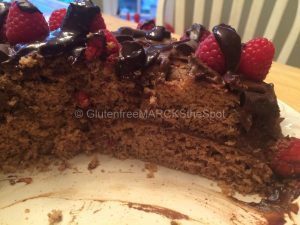But . . . is it gluten-free?!

I was addicted to chocolate. Couldn’t really get enough of it. I turned to chocolate for all situations.
Even after finding out about my allergies and intolerances to foods, I still wanted my chocolate. Actually, that was probably one of the first foods I searched for to be gluten and dairy-free!
If I could still have my chocolate, I was going to be OK!

Today, this is another story. I still love my chocolate. If you ask my kids what my favorite food is, they will immediately say chocolate. But, today, I have a whole different relationship with it.
The healthier I started to eat, the healthier foods I started to actually crave.
Seriously, I really cannot get enough of red peppers lately.
I still like my chocolate treat – either my fabulous chocolate pudding or hot cacao to give me a boost of energy.
Now, I can be totally satisfied with one small square of dark chocolate. Enough . . .
Is Chocolate Good for You?
The answer is both yes and no.
Chocolate has been used for centuries to treat bronchitis, fatigue, hangovers, anemia, depression, memory loss, high blood pressure, poor eyesight, and more. It also helps release that feel-good neurotransmitter—serotonin—in the brain.
But eat the wrong kind and you’ll get loads of sugar, calories, and junky ingredients. (Just think of what a grocery store candy aisle looks like – sorry!)

Eating Chocolate Responsibly
Chocolate begins life as raw cacao beans. Loaded with antioxidants, minerals, vitamins, and plant phenols.
Cacao is a powerful superfood.
According to David Wolfe, cacao is the number one longevity food and can cut the risk of a heart attack in half. It is the highest antioxidant food on the planet, as great source of magnesium, iron, manganese, and chromium.
Along with improving cardio health, cacao builds strong bones and can elevate mood and energy.
The more processed cacao becomes, however—think commercially produced candy bars or even cocoa—the fewer healthy components remain.

How to get your chocolate fix?
- Don’t be afraid of the dark. The darker the chocolate, the more beneficial cacao it contains.
- Know your percentages: the number on dark chocolate packaging refers to the percentage of cacao bean in chocolate. For maximum health benefits, look for dark chocolate that has 75% to 85% cacao.
- Go raw—or as unprocessed as possible.

Enjoy a delicious piece of dark chocolate
and know it is all for your health!
Do you have a favorite dark chocolate?
Share below














